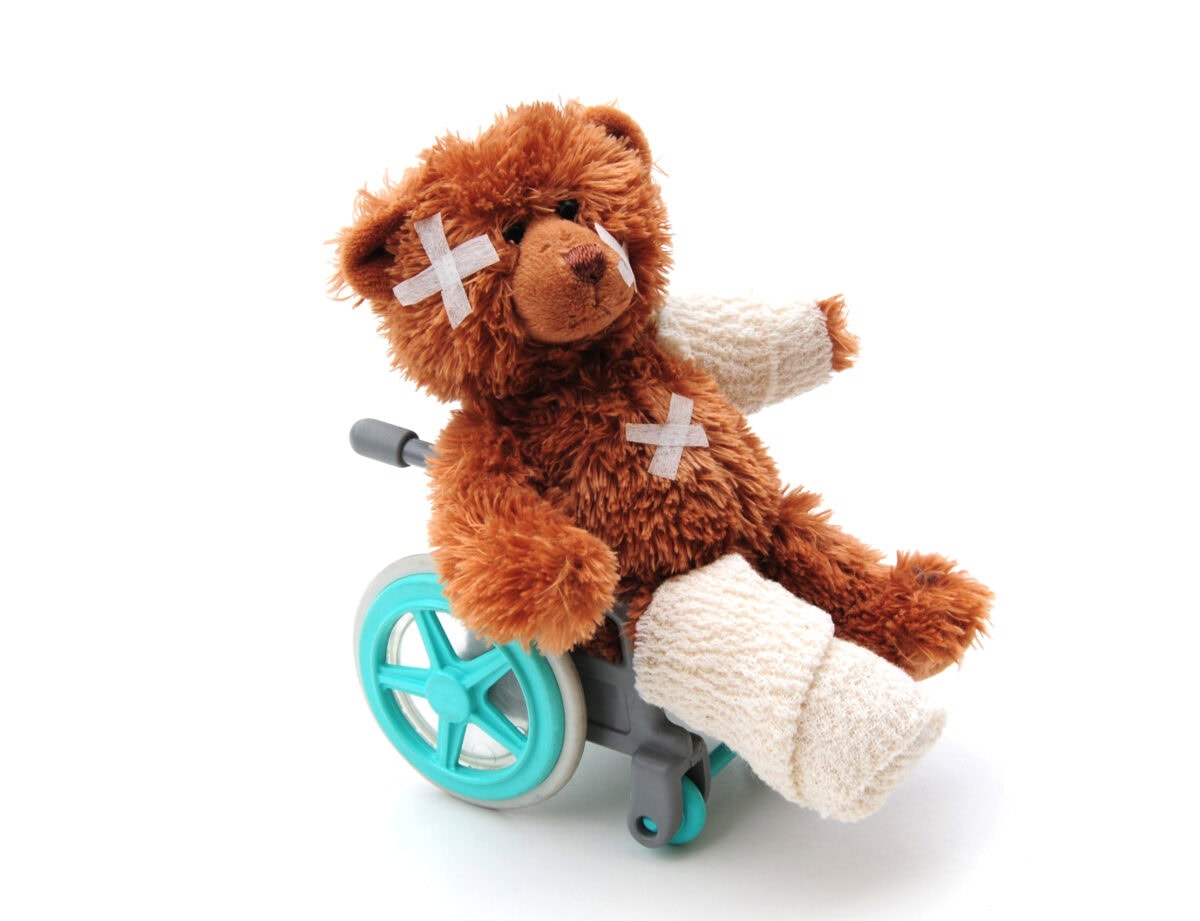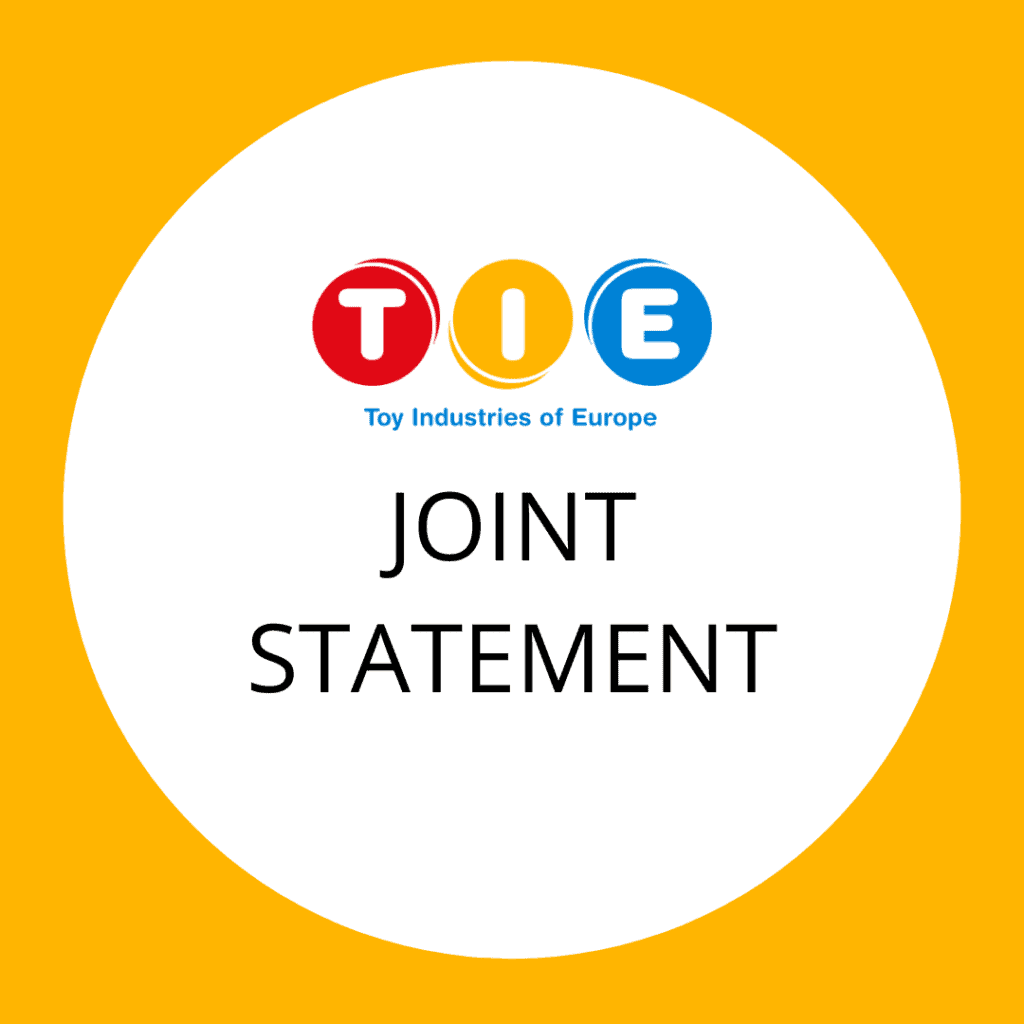PRESS RELEASE
EU Toy Safety: Toy Industry calls for EU rules to enforce online marketplaces to weed out illegal traders
- New report from Toy Industries of Europe shows that in a test exercise 97% of toys bought online from third-party sellers were non-compliant with EU law and 76% of those safety-tested were deemed dangerous for children.
- Industry calls for the EU’s upcoming Digital Services Act to impose responsibilities on online marketplaces.
Brussels, June 17: A report out today “EU Toy Safety : the problem of unreputable sellers on online marketplaces” by Toy Industries of Europe shows that of almost 200 toys bought from third party sellers on four online marketplaces in Europe, 97% did not comply with strict EU toy safety rules and 76% of those tested had defects that made them dangerous for children.
Issues with the toys varied – including risk of choking from small toy parts that detached easily, harmful chemical levels that were several hundred-fold over the EU legal limit, and risk of injury from sharp points.
The toys purchased were non-branded or brands not commonly recognised in the EU.
TIE sees insufficient responsibility taken by online marketplaces and lack of clear legislation as the major enablers of the problem. With e-Commerce proving so vital to economy and society, every effort needs to be made to build consumers’ trust in buying online. Online marketplaces host unverified and unreputable third party sellers as part of their business models rather than weeding them out. They are making money from customers buying these dangerous toys while compromising the safety of children.
“A fundamental change is that the EU must recognise the role of online marketplaces in the supply chain. They are comparable to an importer or a distributor and should be subject to comparable rules. The current lack of clarity on their role means they can – and do – sidestep their responsibility for the safety of toys sold on their platforms.” says Catherine Van Reeth, Director General of TIE. “On the other hand, reputable toy makers invest heavily in ensuring that their products comply with all regulation and do not place children in danger.”
Voluntary initiatives taken by some of the marketplaces, such as the EU Product Safety Pledge, have proven ineffective – making it clear that self-regulation is not the answer.
The upcoming Digital Services Act, together with the revised EU General Product Safety Directive, due to be revised in 2020, must help to remedy the situation by making online marketplaces accountable for taking actions to prevent, react to and screen unreputable seller activity.
Amongst the several necessary changes in the rules should be a requirement that Online Marketplaces verify that the manufacturer has carried out the appropriate conformity assessment procedure and has drawn up EU-compliant technical documentation.
Online marketplaces should also be required to collect and verify contact information for sellers prior to allowing an account.
Finally, online marketplaces should be obliged to react effectively when unsafe toys are discovered on their platforms. They should take down listings and avoid that identical listings are put up. They should also notify consumers and market surveillance authorities to avoid a child is harmed playing with an unsafe toy.
All four online marketplaces were presented with the report findings. The level of responsiveness varied but was lackluster across the board. To date, two of the marketplaces have not sent any notification to customers who bought the defective or non-compliant toys. After more than two months, a third had sent just 12 communications out of 31 toys reported as potentially dangerous and the notifications did not specify why the toys were dangerous. The fourth marketplace contacted some customers even later but gave quite detailed information and guidance. This is further proof that the obligations of online marketplaces need to be written into law.
While three out of four marketplaces quickly removed the listings TIE identified as unsafe and illegal toys, toys that appear, and most likely are, identical remain widely available. In June 2020, they are still on sale on the four marketplaces.
The TIE report follows a 2019 report from the British Toy and Hobby Association which conducted a similar exercise for the UK market.
ENDS
Notes to Editor:
- 193 toys were bought in seven EU markets – Denmark, France, Germany, Italy, the Netherlands, Spain and Sweden. The toys were bought on Amazon, eBay, AliExpress and Wish.
- Safety testing was conducted on 134 toys by an independent lab Bureau Veritas.
- For the report, see: Executive Summary TIE Online Marketplaces – 17 June 2020
- Video clips showing toy defects are available here
- For further information or interviews, contact: Anita Kelly, +32 498 11 21 48, anita.kelly@lanerai.com


